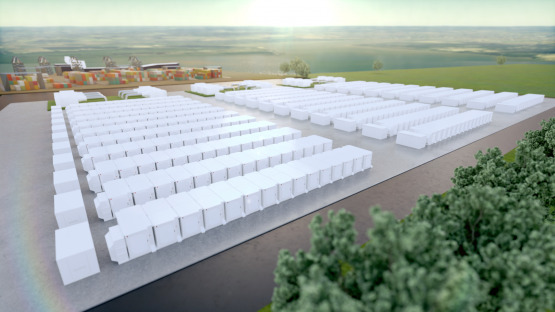
Renewable energy investor Copenhagen Infrastructure Partners (CIP) has confirmed that its 500MW/1,000MWh battery energy storage system (BESS) in Scotland is ready to commence construction.
The project, which is being developed by network solutions company Alcemi via CIP’s Flagship Funds, has been issued a ‘Notice To Proceed’ and will be constructed in Coalburn, just to the southeast of Glasgow. Operation is anticipated to begin in Q4 2025.
Previous coverage by Solar Power Portal confirmed that Alcemi chose the project’s location to support the national transmission system by limiting the impact of network constraints. The company had said that the project had “undergone extensive environmental impact assessments to ensure it meets the highest sustainability and safety standards”.
Alcemi and CIP partnered for the development, construction and operation of a 4GW portfolio of UK energy storage assets back in March 2022.
Mark Williamson, CEO of Alcemi, said: “This is a huge first step for the Alcemi-CIP partnership, and we look forward to continuing working with our partners on projects such as this, that enable the UK to transition from its dependence on fossil fuels to clean energy.”
Alcemi also confirmed that e-Storage will provide its SolBank battery system for the 2-hour duration project. Engineering company H&MV will undertake the balance of plant works.
Canadian Solar’s e-Storage, a subsidiary of the vertically integrated solar PV company’s manufacturing division, CSI Solar, launched SolBank in September 2022. The technology utilises liquid cooled lithium iron phosphate (LFP) batteries, alongside active cell balancing, fire safety systems with multiple levels of protection, and more.
It is worth noting that Solbank is being used to spearhead CIP’s expansion into the Australian market with the firm recently announcing its 240MW/480MWh Summerfield battery storage project in South Australia, as covered by our sister publication Energy-Storage.news.
The project is scheduled for delivery in 2025 and will discharge surplus renewable energy generated at off-peak times to support both the South Australia and Victoria grid when demand peaks.

